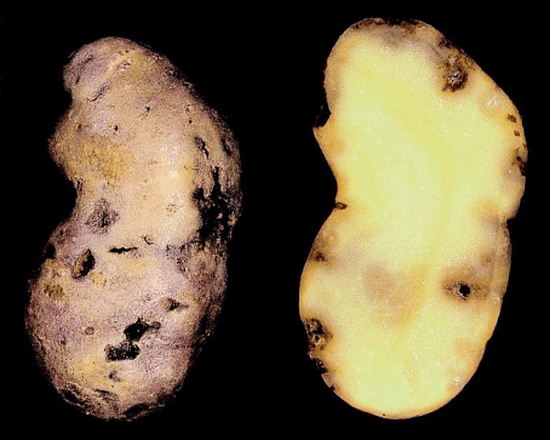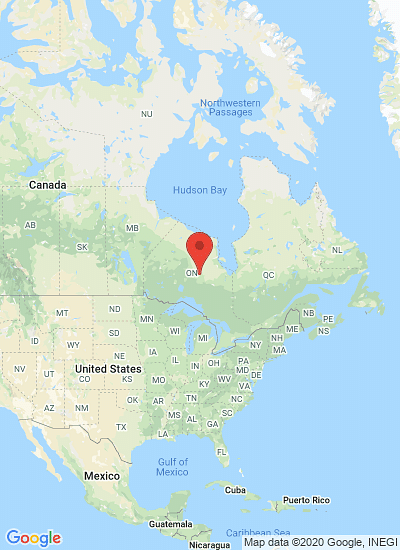Potato rot nematode investigation to include Prince Edward Island
Potato Rot Nematode Confirmed in Ontario

The Canadian Food Inspection Agency (CFIA) has confirmed a detection of potato rot nematode (Ditylenchus destructor) in garlic from a two-acre farm field in the Ottawa region of Ontario.
Potato rot nematode (PRN) is a regulated quarantine pest in Canada that can damage and reduce harvest yields of potatoes and other crops. This pest does not pose a risk to human health.
The affected farm does not produce potatoes or other plant material used for planting on other farms and is not in an area located near a seed potato production operation.
In line with international plant health guidelines, strict quarantine measures have been implemented on the affected property to prevent the spread of this pest. An investigation is underway in collaboration with Agriculture and Agri-Food Canada, the province of Ontario and industry.
Potato rot nematode has been previously confirmed on Prince Edward Island, where it has been effectively controlled, and in areas of the United States, Africa, Asia, Europe, Mexico, Oceania and South America. It spreads mainly through the movement of infested planting material and soil.
What is Potato Rot Nematode (Ditylenchus destructor Thorne) ?
Ditylenchus destructor , potato rot nematode is a tiny roundworm that can cause significant damage to the underground parts (roots, tubers, bulbs) of host crops. Such crops include potatoes, sugar beets, carrots and garlic. PRN can reduce harvest yields of host crops and cause additional damage during storage. While PRN poses no risk to human health, the nematode can affect international trade of certain commodities (especially potatoes).
Where does potato rot nematode occur?
Potato rot nematode is a regulated quarantine pest in Canada under the Plant Protection Act, which is enforced by the CFIA. It has been detected in parts of Canada, the United States, Mexico, Africa, Asia, Europe, Oceania and South America.
Slow to move on its own, PRN primarily spreads through infested planting material [e.g. tubers - potato, rootstock, rhizomes and bulbs (especially Iris)]. Infested soil attached to planting material, machinery and vehicles may also carry the nematode. As well, irrigation or flooding can contribute to short distance travel.
How can Potato Rot Nemodes be detected?
Signs of Potato Rot Nematodes above the ground are rare. Heavily infested potato plants may be smaller and have curling, smaller and discoloured leaves.
Infestations of iris and tulip bulbs tend to begin at the base, causing grey to black lesions that extend upward, blackened roots, and leaves that develop poorly with yellow tips. Early infections in potatoes can be seen by peeling the skin to reveal off-white spots that later will enlarge, darken, and become mealy in texture. Badly affected tubers may demonstrate slightly sunken areas with cracked and wrinkled skin, detached in places from the underlying flesh, deteriorating further in colour from greyish to dark brown or black.
Unlike certain other nematode species, this nematode lacks a protective resting stage and is unable to survive through extended periods of desiccation (drying). Thus, Potato Rot Nematode is usually only an important plant parasite under cool, moist conditions. Potato Rot Nematode over-winters on leftover plant debris or in soil (as adults and larvae), where it can multiply by feeding on a wide range of other plant hosts. It may also over-winter as eggs.
What crops can host potato rot nematodes?
Potatoes are the principle host, although the nematode may also attack other crops such as iris, carrot, dahlia, garlic, gladiolus, onion, sugar beet, sweet potato and tulip.
At least 90 crop and weed species (such as dandelion, plantain and mint) serve as hosts. Potato Rot Nematode is also known to feed on a broad range of soil fungi.
Best management practices
Once established, potato rot nematode is nearly impossible to eliminate because it can survive on a range of other hosts and soil fungi.
Although a new generation of potato rot nematode will be produced each time a host crop is grown, some practices help reduce and manage the nematode population over time.
- Avoid moving potentially infested plant debris and soil onto other agricultural land through shared farm machinery, equipment, or tools.
- Clean and disinfect all equipment before going to a new farm or going between fields.
- Be sure all commercial transport vehicles are free of plant debris and soil.
- Plant certified seed produced on land determined not to be infested with the potato rot nematode.
- Avoid continual planting of a crop in the same field(s) and rotate with non-host crops.
- Contain plant debris, water and soil during crop washing.
- Segregate crops in storage;products of each field should be stored separately.
- Plant cover crops when fields are not in use, so that wind and water do not move soil.
- Keep hedgerows or sod barriers between fields and along highways.
Regulatory controls in Canada
If Potato Rot Nematodes is detected, immediate regulatory measures are taken to contain potential spread. Potato rot nematode is a regulated quarantine pest in Canada and any suspected infestation must be immediately reported to a local CFIA office.
Source: CFIA News









